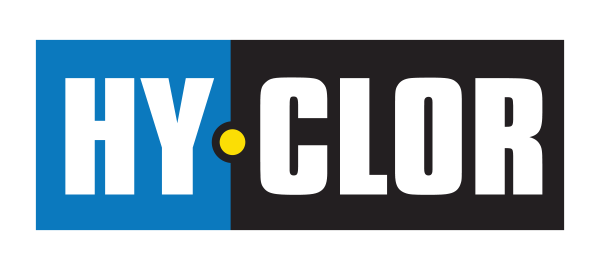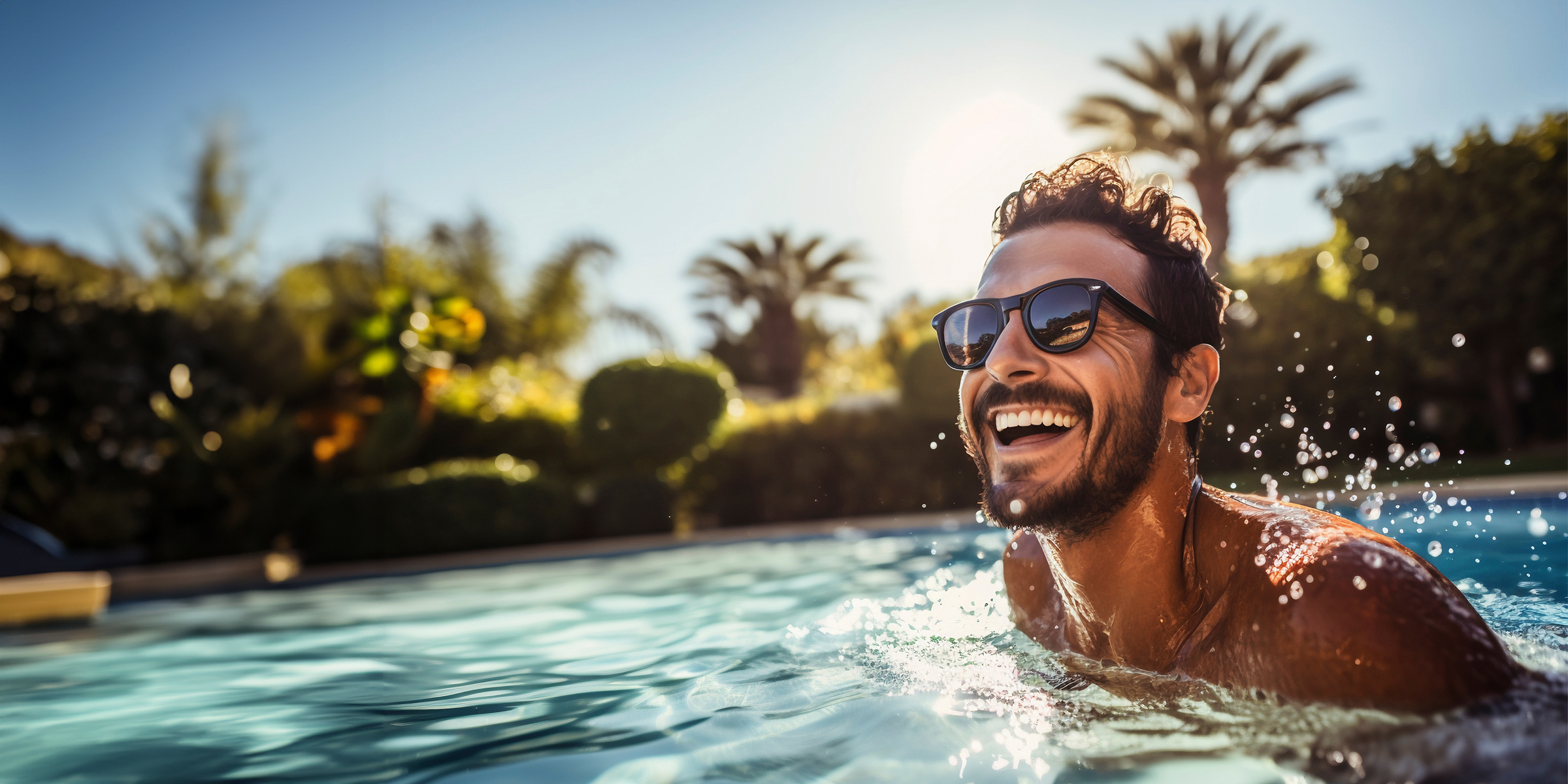Welcome to the ultimate guide showing the best way to keep a pool clean, regardless of the type.
Are you wondering: What is the fastest way to clean a dirty pool? And “How do I clean my pool like a professional?”
We’ll answer those questions and tackle common challenges pool owners face, such as selecting and using the right tools and dealing with issues like leaves, pollen, algae, and cloudy water.
Let’s jump right in!
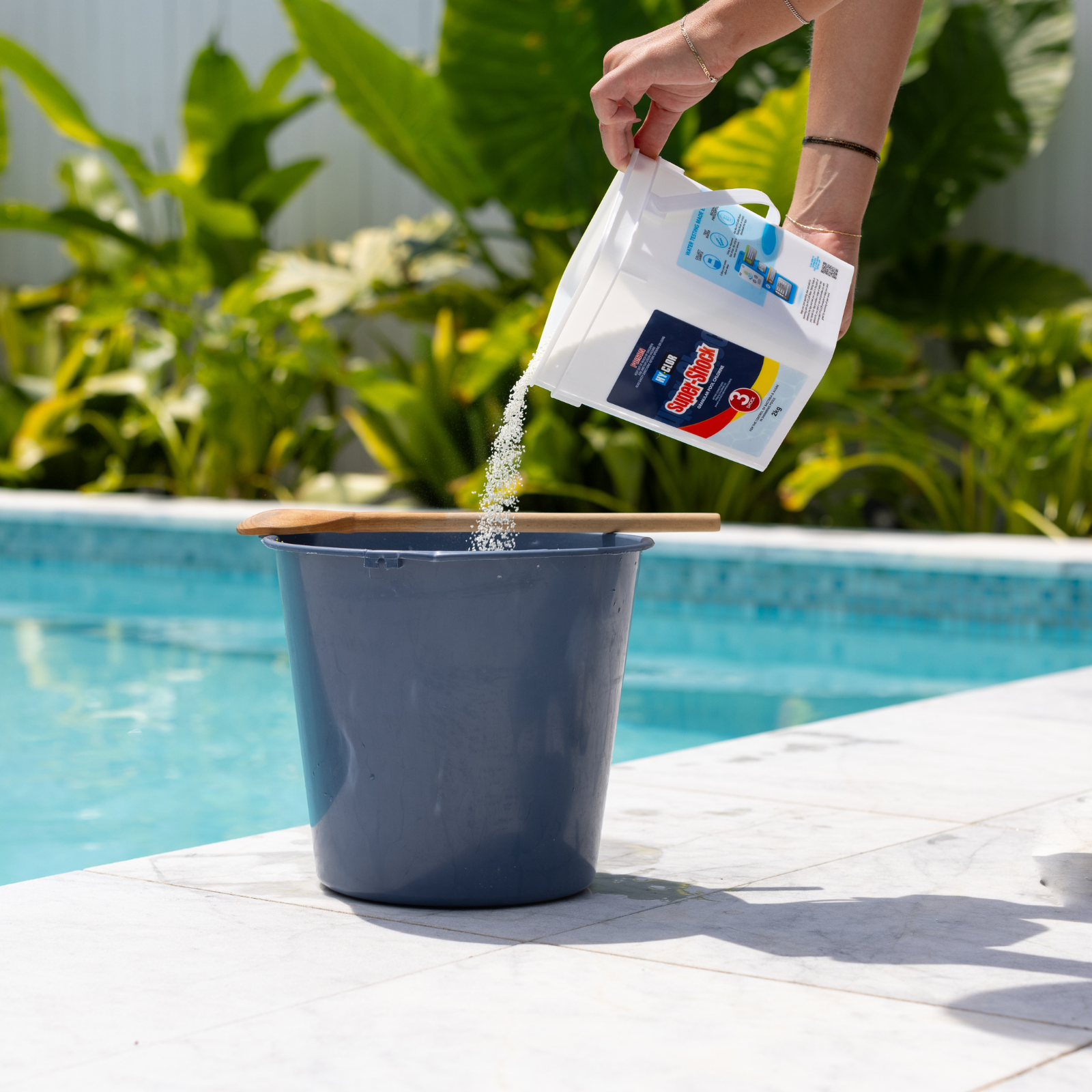
Start With the Right Tools
Pool Cleaning Chemicals
Pool cleaning chemicals are essential for effective pool maintenance.
- Balancer chemicals include pH balancers, alkalinity, calcium hardness and stabiliser. These stabilise the water chemistry, making it more comfortable for swimmers and optimising the performance of other chemicals.
- Chlorine is the primary sanitiser to kill bacteria and other harmful organisms to keep pool water clean and safe.
- Algaecides kill and prevent algae growth, keeping your pool water clear.
- Clarifiers bind tiny, hard-to-filter particles together so the filtration system can easily remove them to enhance pool water clarity.
Mineral Salts
Whether you have a chlorine or saltwater pool, mineral salts offer a range of benefits.
The most common mineral additive is Magnesium. Magnesium aids filtration and water clarity and helps give the water a silky feel. Mineral salts facilitate the filtration process by softening water and minimising calcium and scale buildup on pool equipment and the water surface. Hy-Clor MagSalt is pure magnesium chloride which is used in conjunction with standard pool salt (Sodium Chloride).
Potassium chloride is another useful mineral salt used in pools. Hy-Clor Evo Minerals have a lower concentration of magnesium sulphate but also has the benefit of potassium chloride to help soften the water, it is also designed to be used with standard pool salt (Sodium Chloride). Beyond improved water quality, these salts provide health benefits for swimmers. They are absorbed by your skin, helping to relax muscles and ease stiff joints when swimming.

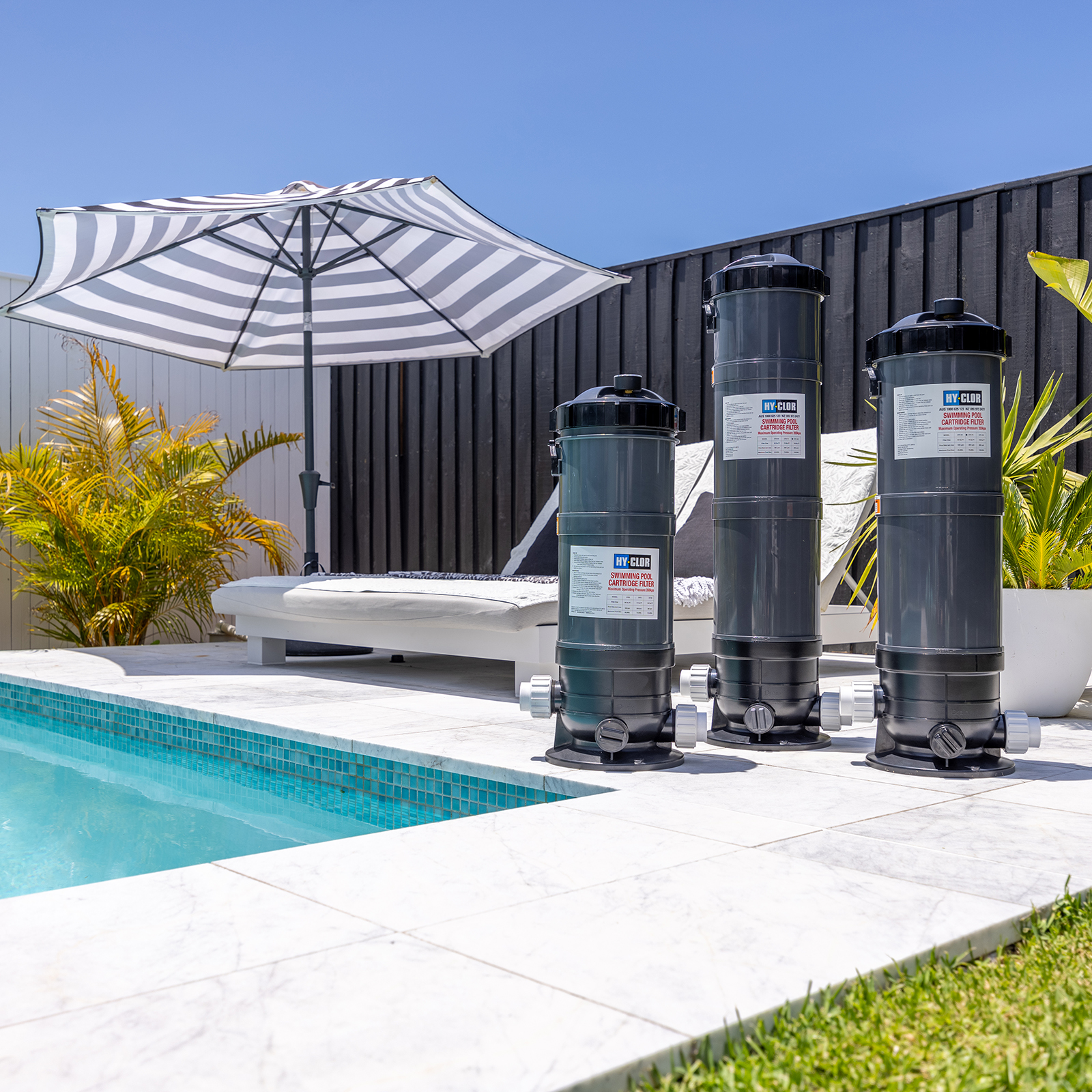
Pumps and Filters
A pool pump circulates water through your pool’s filtration system, pulling water from the pool, pushing it through the filter, and returning it clean. A pool filter removes debris and contaminants from the water as the pump circulates it.
There are cartridge and sand pool filter options. Both do the job but in different ways, and your choice will depend on your pool’s size, location, and how fine of a filtration you desire.
Cartridge filters use a paper-like cartridge to trap debris. They are easy to maintain and suitable for smaller pool areas with limited equipment space. They usually require more frequent cleaning and need replacement cartridges every one or two years.
Sand filters use a bed of sand to filter out debris. They are generally more affordable and longer-lasting but might not catch the smallest particles. You’ll need to “backwash” the sand monthly to remove the trapped debris and replace the media every five to seven years.
Besides sand, other media such as glass and zeo-lite can be used in sand filters.
Automatic Suction Cleaners
Automatic suction cleaners attach to your pool’s skimmer or suction line and use the power of the pool’s pump to move around the pool, picking up debris and particles. This minimises any manual scrubbing or vacuuming, saving you time and effort.
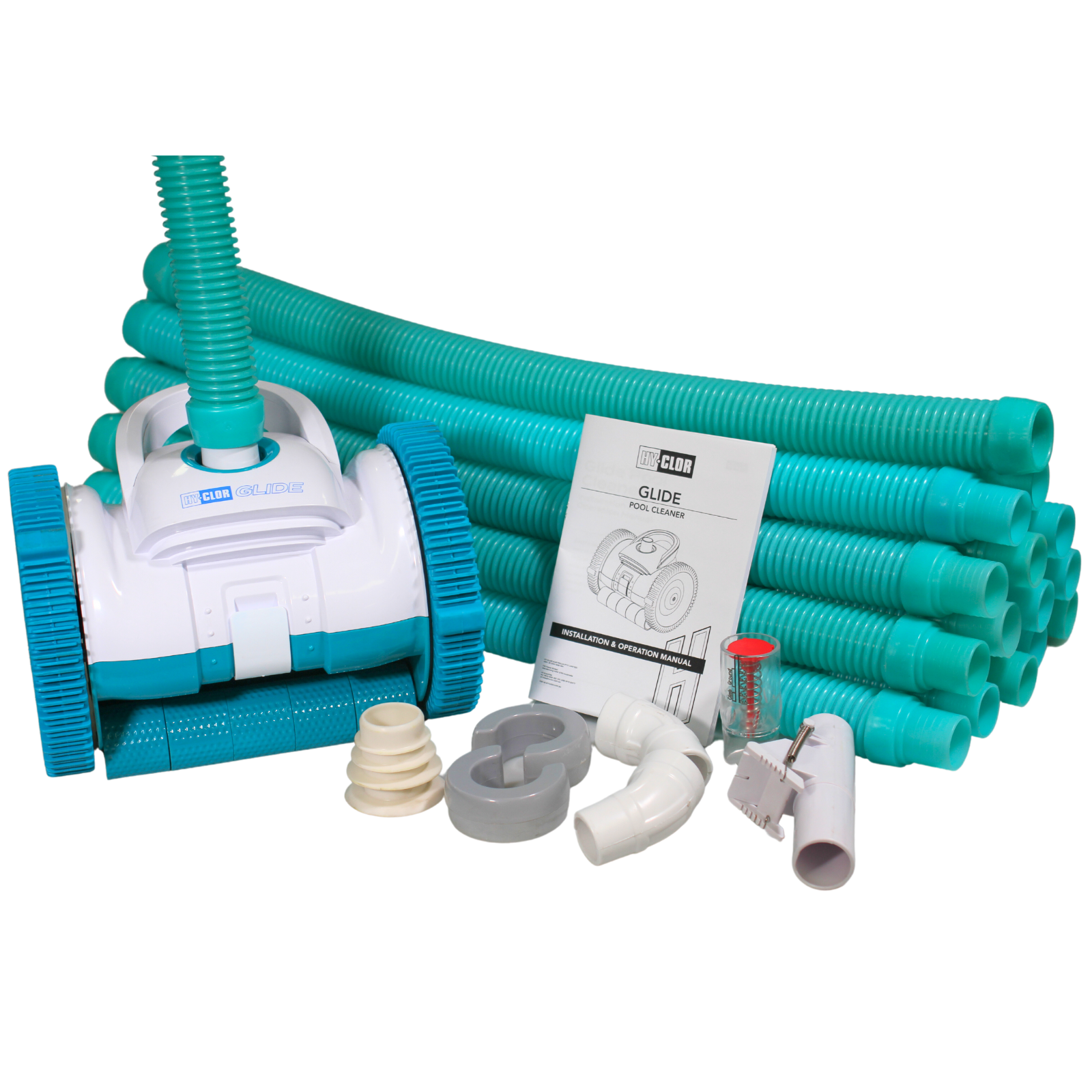
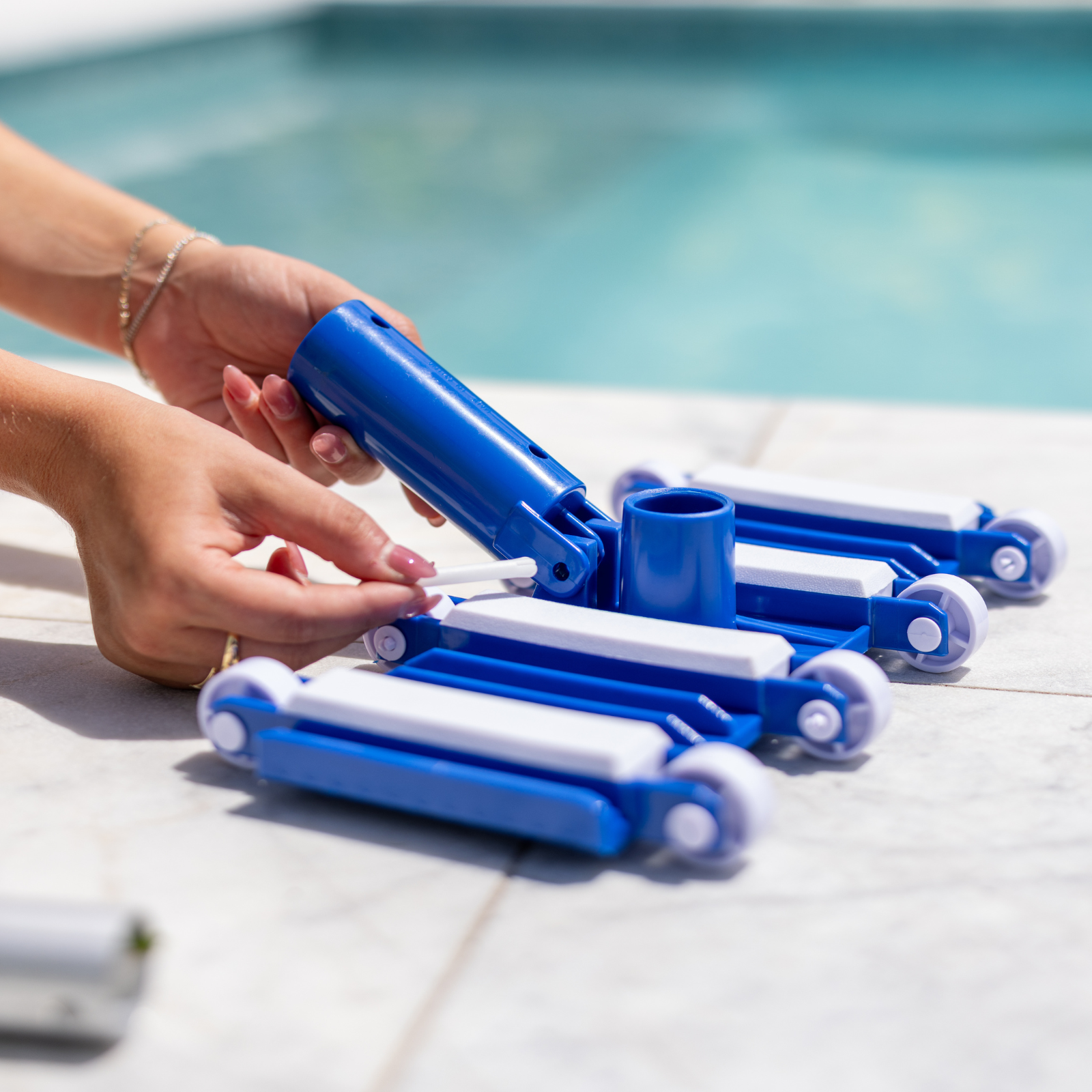
Handled Tools
Handled tools are handy and easy to use for cleaning pool surfaces like a pro.
These include:
- Telescopic Pole: A long adjustable pole that normally is made from aluminium which many of your handheld equipment will attach too.
- Rakes: A net or mesh bag attached to a long pole. The net tapers towards the bottom for superior leaf collection from the pool’s surface and floor. You drag and pull the rake back and forth to create a slight current that collects debris into the net.
- Shovels: Like a leaf rake, a shovel has a deep net to remove larger debris from the pool’s surface and floor. However, these tools have an angled edge along the frame that allows you to push and shovel debris.
- Scoops: These shallow nets are ideal for skimming leaves, bugs, and other floating debris from the water’s surface.
- Brushes: These attach to a Telescopic Pole: to scrub the pool’s walls, floor, and steps. They have stiff bristles (often made of nylon or stainless steel) to scrub away tough buildup like algae or mineral deposits on concrete or plaster pool surfaces that can withstand harsher scrubbing.
- Vacuum Heads: These attach to the Telescopic Pole: along with a vacuum hose to enable you to clean the pool surface manually, these come in Versions for concrete pool or vinyl pools with brushes depending on your pool surface.
- Vacuum Hose: These are continues hoses in varying sizes (link hyclor hoses) which enable you to connect to a vacuum head and skimmer plate (vacuum plate) It uses the pool pump and filter to clean the pool, this is done manually via a vacuum head.
Apply the Right Tools and Steps for Your Pool
What is the best way to clean a pool with the tools you’ve gathered? Each pool has its own “personality”, demanding customised cleaning methods.
Here are some helpful tips for keeping your above-ground, fibreglass, vinyl, or concrete pool in great shape.
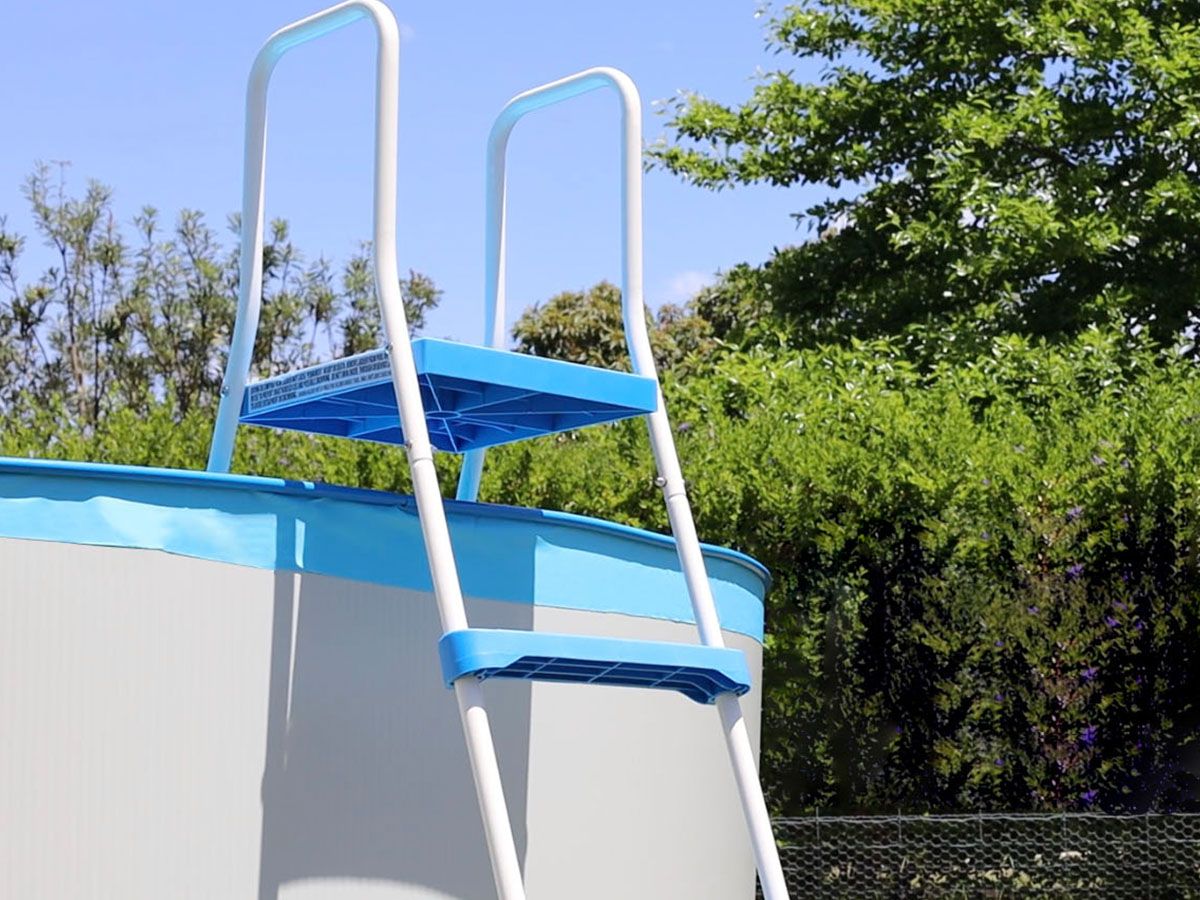
Tools:
- Test strips
- Pool rake or scoop
- Pool vacuum head
- Pool brush
- Telescopic pole
Chemicals:
- Chlorine or bromine
- pH balancers
- Alkalinity Increaser
- Stabiliser (Cyanuric Acid)
- Algaecides
- Clarifiers
Cleaning procedure:
- Use a pool rake or scoop attached to a telescopic pole to remove leaves and other debris.
- Attach a brush to the telescopic pole and brush the pool sides and bottom to dislodge algae and dirt.
- Use a pool vacuum or similar automatic pool cleaner specifically designed for above-ground pools to suck up the loosened debris. Hy-clor’s i2 Battery Robot is a great Choice. (link i2)
Chemical treatment:
- Test the water’s pH, Alkalinity, Cyanuric acid, hardness and chlorine levels.
- Use pH balancers to adjust Alkalinity, retest the pool to ensure the alkalinity level is correct before proceeding.
- pH, Cyanuric acid, and hardness as needed.
- Add chlorine or bromine, following the manufacturer’s instructions.
- Add algaecide if you notice any algae formation.
- Lastly, add clarifiers or flocculents to get your water clear and sparkling.
- Re-test the water to check that all chemical levels are within the recommended range.
Fibreglass Pools
Here are the steps unique to cleaning fibreglass pools.
- Fibreglass surfaces can scratch easily, so use a soft-bristle pool brush to scrub the pool walls and floor.
- Choose an automatic pool vacuum specifically designed for or suitable for fibreglass surfaces.
- Fibreglass pools are prone to staining from metals like iron or copper, so use a metal sequestrant to prevent this.
- Opt for algaecides low in abrasive chemicals, as harsher algaecides can affect the gel coating on a fibreglass pool.
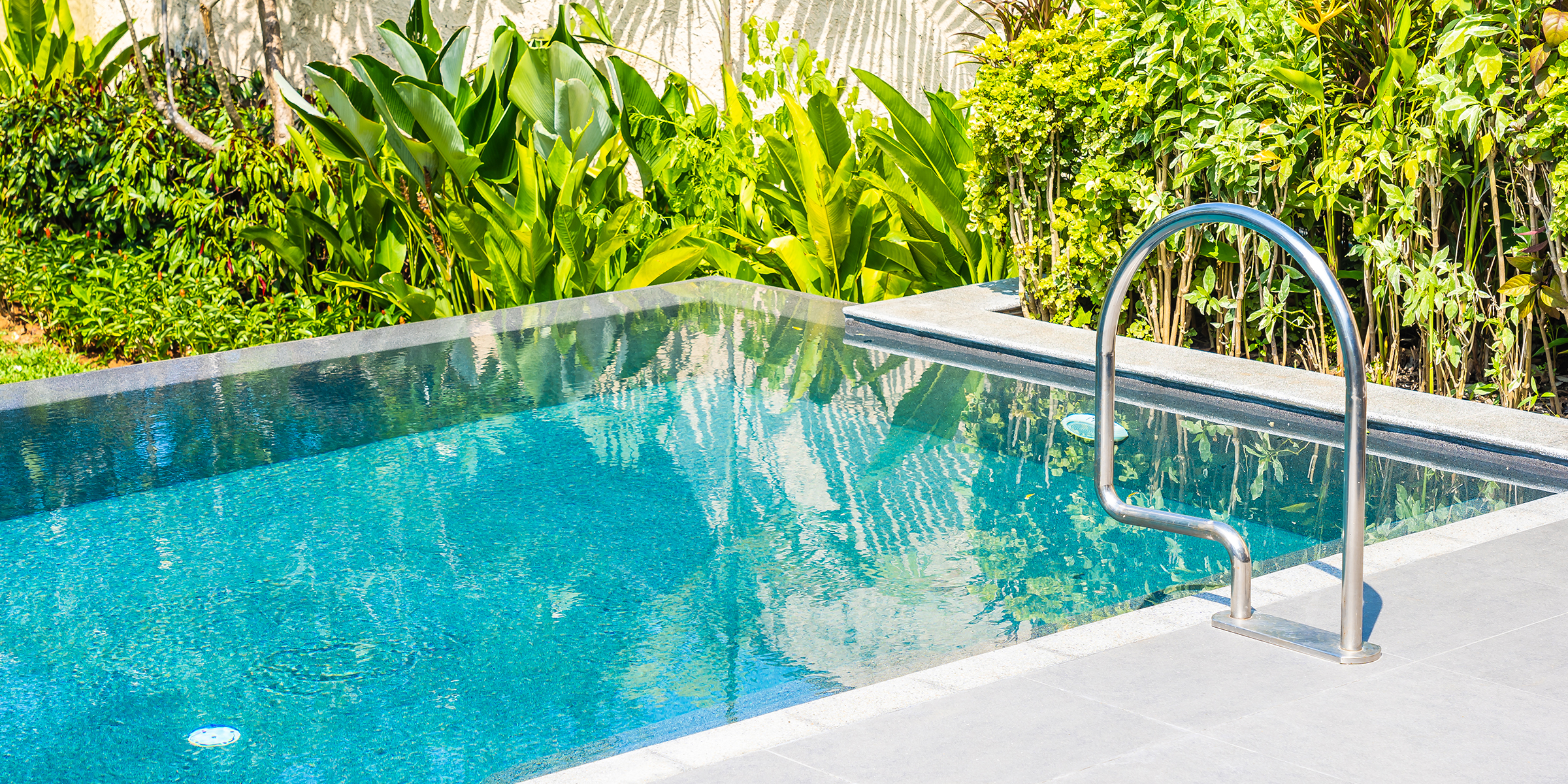
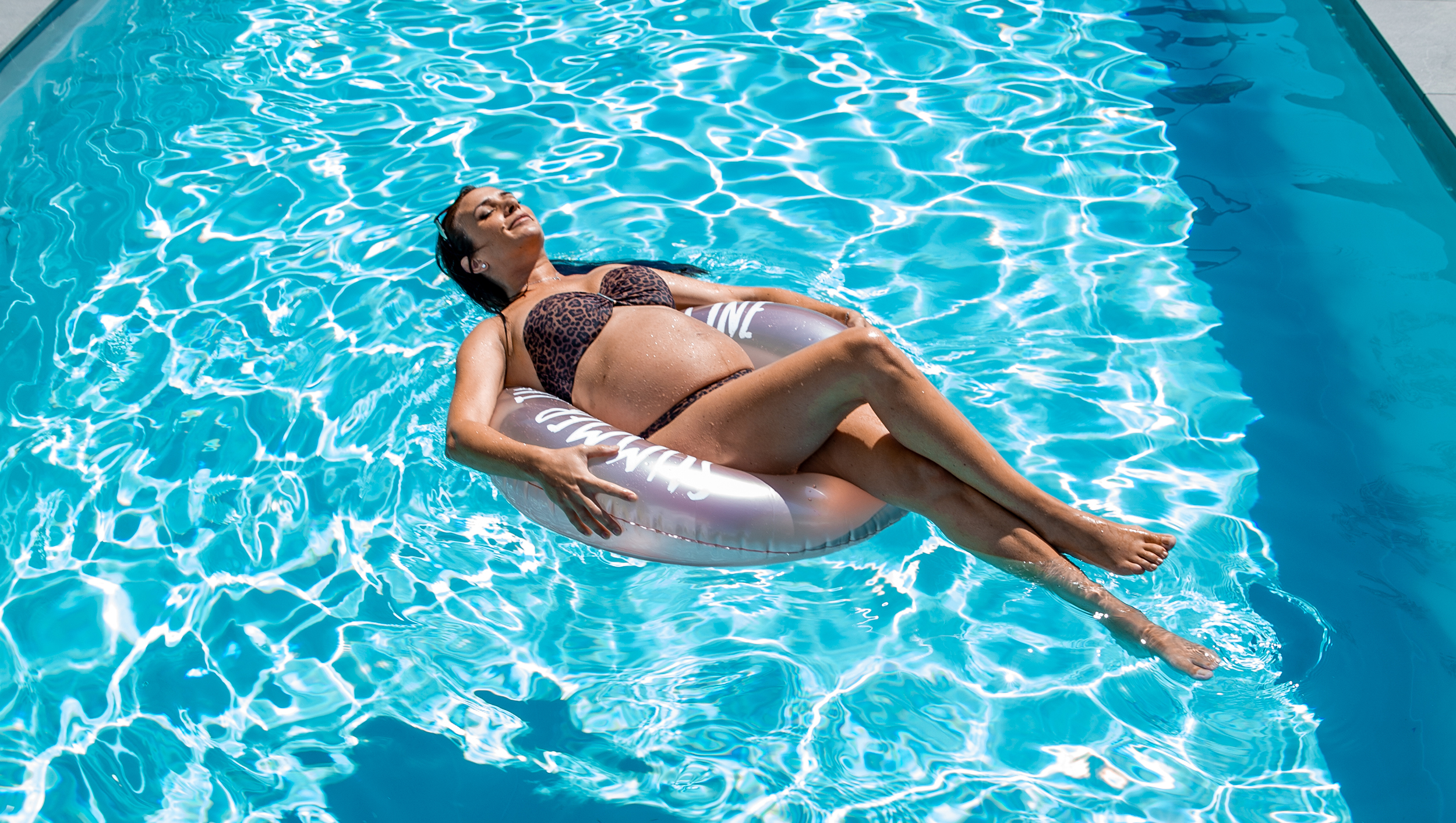
Vinyl Pools
Caring for a vinyl pool is similar to caring for a fibreglass pool, so read the section above.
There are a few differences to take note of.
Vinyl liners can be more sensitive to certain chemicals, like high concentrations of chlorine or bromine, which can cause fading or weakening. Algaecides containing copper can also be harsh on vinyl.
Milder chemicals are often recommended, including
- Liquid chlorine as it’s usually less harsh than granular forms.
- Polyquat algaecides because they’re copper-free and less abrasive.
- pH and alkalinity balancers labelled as suitable for vinyl liners.
Concrete Pools
Concrete pools have their own cleaning needs due to the material’sporous nature.
They aremore susceptible to algae growth, so they need more frequent brushing. Unlike fibreglass or vinyl-lined pools, you can scrub concrete pool surfaces using stainless steel pool brushes.
Concerning chemicals, concrete pools can leach calcium, so maintaining proper levels with a calcium increaser is crucial. These pools also tend to have more fluctuation in pH and alkalinity levels, so you’ll need to use balancing agents like alkalinity increasers.
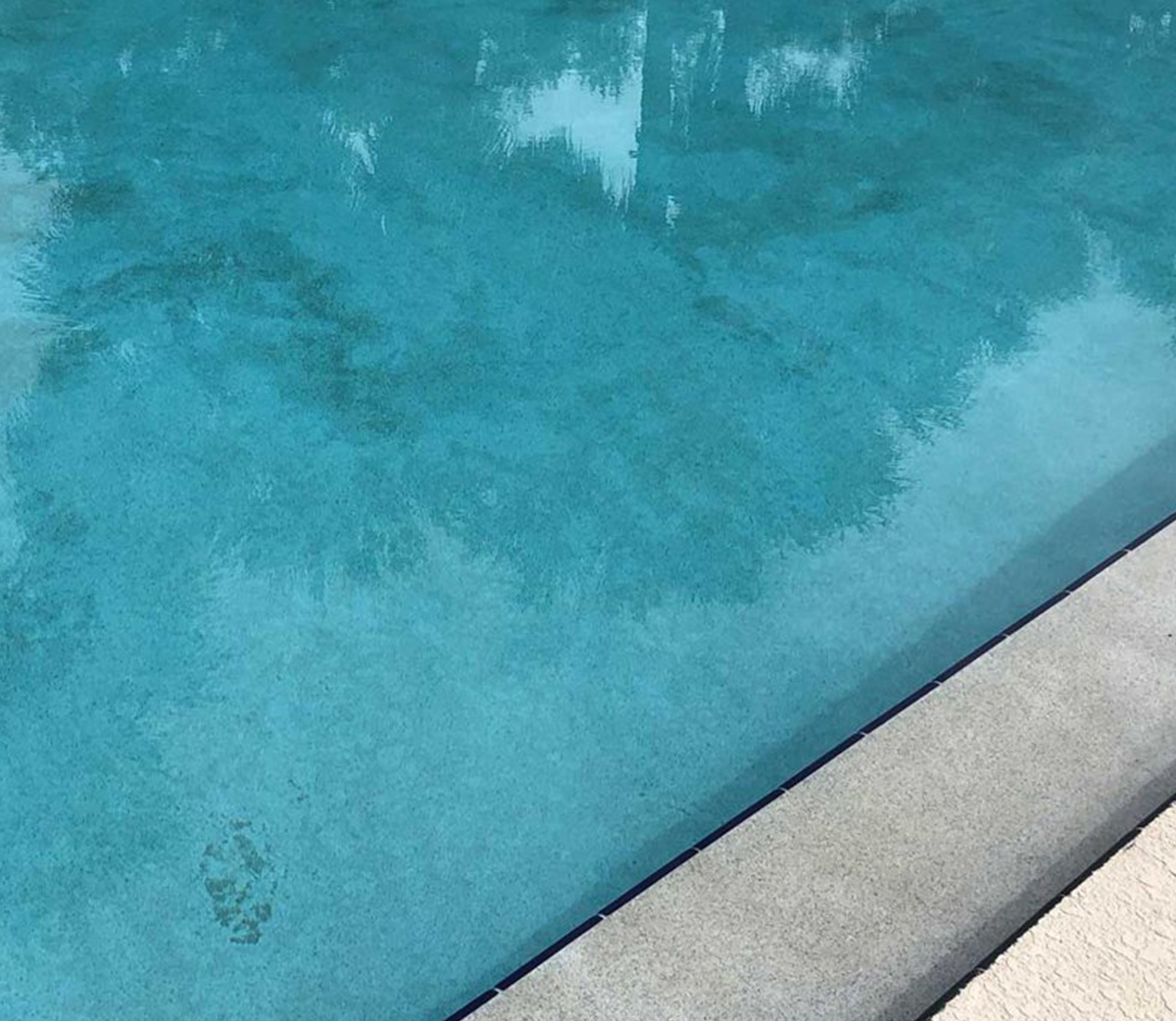
Do You Need Fibreglass Cleaning Materials?
A clean pool means more fun in the sun, so keep yours fresh and stain-free with the help of Hy-Clor’s pool maintenance products.
If you need stain support, don’t hesitate to contact us by filling in the online form! Alternatively, visit your nearest Bunnings Warehouse for our full range of products.
For more tips and tricks on fibreglass pool cleaning, check out our Learning Centre and dive into our video resources.



